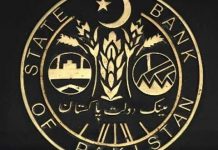Pakistan’s total debt composition continues to reflect a growing reliance on domestic borrowing, even as the country managed to marginally reduce its external liabilities in the third quarter of FY2025, according to fresh data released by the State Bank of Pakistan (SBP).
As of the end of Q3 FY25, Pakistan’s total external debt and liabilities stood at $130.31 billion, down 0.47% on a quarter-on-quarter (QoQ) basis and 0.61% year-on-year (YoY). This marks a decrease of $611 million compared to the previous quarter and $805 million compared to Q3 FY24, when external liabilities totaled $131.1 billion.
Public external debt accounted for the bulk of this figure, standing at $99.23 billion or nearly 76.15% of the total. Within this category, the government’s external debt rose to $79.13 billion, reflecting a 1.28% QoQ increase and a 0.24% increase from the same period last year. Long-term debt, which forms the largest component, was reported at $78.18 billion, up 1.51% QoQ but down 0.56% YoY. Meanwhile, short-term external debt increased sharply to $949 million, up by nearly 198% YoY.
The country’s debt to the International Monetary Fund (IMF) stood at $8.27 billion during the quarter under review, with $3.87 billion owed by the central bank and $4.4 billion by the federal government. Foreign exchange liabilities also increased slightly, reaching $11.82 billion—up 0.97% QoQ and 0.04% YoY.
Outside of public debt, Pakistan also carried $7.59 billion in external liabilities from public sector enterprises (PSEs), $5.67 billion from bank borrowings (of which $1.86 billion was short-term), and $11.83 billion in private sector debt. Intercompany debt—obligations owed to foreign direct investors—was recorded at $5.99 billion.
While external debt moderated, domestic debt witnessed a notable increase. By March 2025, the central government’s total debt had surged to Rs73.69 trillion, a 12.71% jump from Rs65.38 trillion in March 2024, and a 0.89% increase from Rs73.04 trillion in February 2025. The rise is attributed to persistent fiscal deficits, prompting the government to rely heavily on both local and foreign financing.
Of the total, domestic debt comprised the lion’s share at Rs51.52 trillion. Within this, long-term debt surged by 25.09% YoY to Rs43.59 trillion, while short-term debt declined 7.44% to Rs7.86 trillion. Pakistan Investment Bonds (PIBs) made up Rs33.62 trillion of the long-term borrowing, increasing by 28.48% YoY and 3.27% month-on-month (MoM). In contrast, Market Treasury Bills (MTBs)—the primary source of short-term debt—declined to Rs7.76 trillion, down 7.68% YoY and 4.57% MoM.
Borrowing through the Naya Pakistan Certificates also fell, totaling Rs62.67 billion in March 2025—a 33.23% YoY drop and a 10.65% decline compared to February.
On the external front of the central government’s debt, Rs21.9 trillion came from long-term loans, while Rs266 billion was attributed to short-term borrowing.
Overall, the latest debt statistics present a mixed picture. While Pakistan has managed to marginally reduce its external obligations amid foreign exchange constraints and tighter global financing conditions, domestic borrowing continues to surge. This shift underscores Islamabad’s growing dependence on internal sources to meet its fiscal needs—even as structural reforms and fiscal consolidation remain on the agenda under its ongoing IMF programme.























